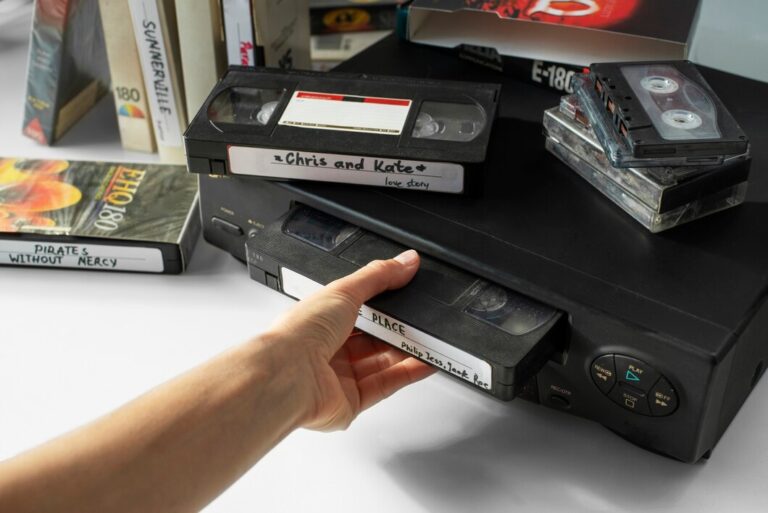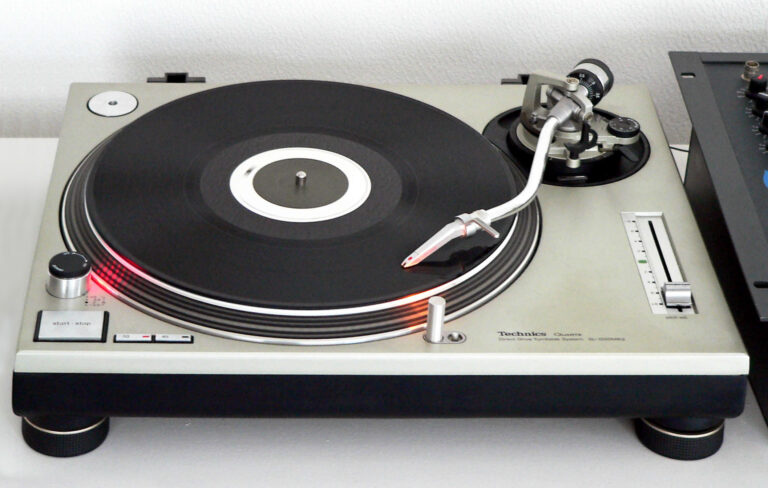
Before the endless scroll of Instagram or the curated connections of Facebook, there was a chaotic, customizable, music-blasting corner of the internet where millions built their first digital homes: MySpace. Launched in 2003, it wasn’t just a social network; for a glorious period, it was the social network, defining online interaction for a generation. MySpace was a pioneer in the social media evolution, revolutionizing how people connected online in the early 2000s.
From meticulously coding profile layouts with glittery backgrounds and auto-playing songs to the daily drama of rearranging your Top 8 friends, MySpace was a vibrant, messy, and deeply personal platform.
It skyrocketed to become the most visited website in the US, launching music careers and shaping youth culture [Google Search]. Yet, almost as quickly as it rose, it fell, eclipsed by the cleaner, more structured world of Facebook [Google Search]. What really happened to the behemoth that once ruled the social web? Let’s dive into the history, the culture, and the complex reasons behind the rise and fall of MySpace.
The Dawn of Your Space: Building the First Social Giant
MySpace emerged in August 2003, born from the minds of employees at eUniverse (later Intermix Media), including Tom Anderson and Chris DeWolfe [Google Search]. Inspired by the potential (and perhaps the limitations) of earlier social sites like Friendster, they aimed to create a more dynamic and user-driven platform [Google Search].
Leveraging eUniverse’s existing infrastructure and user base, the first version of MySpace launched remarkably quickly, within just 10 days [Google Search].
Key factors in MySpace’s initial explosion:
- Timing: It arrived as broadband internet adoption was increasing and interest in online social connection was surging [Google Search]. Friendster’s technical struggles also created an opening [Google Search].
- Customization: Unlike the rigid structures of other sites, MySpace embraced personalization. Users could modify their profiles using HTML and CSS, adding custom backgrounds, layouts, fonts, and widgets. This creative freedom was a massive draw, especially for teens and young adults seeking self-expression.
- Music Integration: MySpace became a crucial hub for musicians, particularly unsigned and indie bands. Artists could create profiles, upload their music for streaming, share tour dates, and connect directly with fans [Google Search]. This made music discovery a core part of the MySpace experience.
- “Tom” as Your First Friend: Every new user was automatically friends with co-founder Tom Anderson (“Myspace Tom”), creating an instant sense of welcome and connection, however superficial [Google Search].
- Viral Growth: Leveraging eUniverse’s email lists and early user enthusiasm, MySpace grew exponentially, reaching millions of users within its first couple of years [Google Search].
By 2005, MySpace wasn’t just popular; it was dominant. It had overtaken Friendster and was rapidly becoming the central hub for online social life for a generation.
The Evolution of Social: From Custom Chaos to Clean Feeds

MySpace represented a pivotal moment in the evolution of online personal expression, bridging the gap between earlier static homepages and modern social feeds.
- Early Social & Homepages (GeoCities, Friendster): Focus on static profiles or interest-based pages. Limited interactivity and customization (Friendster was less customizable than MySpace).
- The MySpace Era (2003-2008):
- Peak Customization: Users had immense control over their profile’s look and feel (HTML/CSS). Profiles were unique, often loud declarations of identity, musical taste, and friendships (via the Top 8).
- Multimedia Focus: Music and embedded videos were central [Google Search]. Blogs and bulletins allowed for longer-form expression.
- Open Networking: Profiles were generally public, fostering discovery but also raising privacy concerns [Google Search].
- The Rise of Facebook (2004-Present):
- Standardized Profiles: Facebook offered a clean, uniform profile structure. Customization was minimal, prioritizing ease of use and consistency over radical self-expression.
- The News Feed: Introduced in 2006, the algorithmic feed shifted the focus from visiting individual profiles to consuming a continuous stream of updates from friends.
- Real Identity Focus: Facebook initially required university email addresses and generally encouraged the use of real names, fostering a different kind of social graph based more on offline connections.
- Platformization: Facebook opened its platform to third-party apps and games, expanding functionality beyond core social features [Google Search].
- The Visual & Mobile Era (Instagram, TikTok, etc.):
- Mobile-First: Designed primarily for smartphone use.
- Visual Focus: Emphasis shifted heavily towards photos (Instagram) and short-form video (TikTok).
- Algorithmic Discovery: Feeds and discovery are heavily driven by algorithms designed to maximize engagement.
- Ephemeral Content: Features like Stories emphasize temporary, less permanent sharing.
MySpace represented the peak of user-controlled profile design in mainstream social media. The platforms that followed prioritized simplicity, uniformity, and feed-based consumption, trading deep customization for ease of use and network effects.
“Technical” Specs: Social Platforms Compared
How did MySpace differ from the platforms that overtook it in terms of features and approach?
| Feature | MySpace (Peak Era ~2006) | Facebook (Early Growth ~2008) | Instagram (Mature ~2020s) |
| Profile Design | Highly Customizable (HTML/CSS) | Standardized Template | Standardized Template |
| Primary Content | Music, Blogs, Photos, Bulletins | Status Updates, Photos, Links | Photos, Videos, Stories, Reels |
| Main Feed | Less Central (Profile visits key) | News Feed (Algorithmic) | Feed & Stories (Algorithmic) |
| Identity Focus | Pseudonyms Common, Self-Expression | Real Names Encouraged | Curated Visual Persona |
| Privacy Controls | Limited/Basic | More Granular | Evolving, Post/Story Specific |
| User Interface | Often Cluttered, User-Defined | Clean, Uniform, Simple | Mobile-First, Visual Focus |
| Monetization | Display Ads (Often Intrusive) | Targeted Ads, Platform Apps | Targeted Ads, Shopping, Creators |
| Mobile Experience | Poor / Late | Evolving -> Strong | Native / Primary |
| Key Feature | Customization, Music Discovery | Network Connections, News Feed | Visual Sharing, Stories |
Export to Sheets
MySpace’s strength – its customizability – eventually became a weakness. As Facebook offered a simpler, faster, and more consistent experience, particularly as mobile usage grew, users migrated away from MySpace’s often slow-loading, chaotic pages [Google Search].
Cultural Impact: Music, Memes, and the MySpace Angle
MySpace wasn’t just a website; it was a cultural force, particularly in the mid-2000s.
- Launching Music Careers: It revolutionized music discovery. Countless artists (Arctic Monkeys, Lily Allen, Panic! At The Disco, Adele, and many more) gained their first significant exposure and fanbase through MySpace profiles, bypassing traditional record labels.
- Defining Early Social Norms: MySpace introduced concepts that became social media staples: the public friends list, profile songs, status updates (via bulletins), and online social drama (often centered around the Top 8).
- Aesthetic Trends: The platform spawned distinct visual trends – heavily customized profiles with clashing backgrounds, glitter text, embedded widgets, and the infamous high-angle “MySpace selfie” designed to emphasize the face [Google Search].
- Youth Culture Hub: It was the place for teenagers and young adults online, shaping slang, fashion influences, and social interaction during its peak years [Google Search].
- Digital Identity Formation: The relative anonymity and creative freedom allowed users, especially young people and marginalized groups like LGBTQ+ youth, to explore and express their identities in ways they couldn’t offline [Google Search].
- Pioneer (and Cautionary Tale): MySpace paved the way for Facebook and subsequent platforms but also served as a lesson in the importance of adapting, innovating, and prioritizing user experience over short-term monetization [Google Search].
Its influence can still be seen in how artists connect with fans online and how users curate their digital personas, even if the platform itself faded.
Collector’s Corner: Ghosts in the Machine
Collecting MySpace “artifacts” is challenging, as most of its value was digital and ephemeral. Unlike physical media, preserving a dynamic website is difficult.
- The Great Data Loss: In 2019, MySpace confirmed that due to a server migration error, all music, photos, and videos uploaded before 2016 had been permanently lost [Google Search]. This event tragically wiped out a vast archive of early digital culture, particularly affecting countless musicians who used MySpace as their primary archive.
- Archiving Challenges: While the Internet Archive’s Wayback Machine captured snapshots of some MySpace profiles, the dynamic, heavily customized nature of the site (reliant on specific CSS, Flash elements, and music players) makes full restoration difficult or impossible. Many archived profiles appear broken.
- Digital Archaeology: “Collecting” MySpace involves sifting through these archives, piecing together fragments, or finding screenshots shared elsewhere online. It’s more about historical research than tangible possession.
- Cultural Memory: Perhaps the most collectible aspect is the shared cultural memory – the jokes about Tom, the Top 8 anxiety, the profile songs. These live on in online discussions, nostalgic articles (like this one!), and retrospective videos.
The MySpace data loss serves as a stark reminder of the fragility of digital heritage stored on centralized platforms and the importance of personal backups and robust digital preservation efforts [Google Search].
Why We Miss the Clutter (Sometimes)
Given its flaws – the slow load times, the often-garish designs, the spam – why do people feel nostalgic for MySpace?
- Creative Control: The ability to completely design your own space felt empowering. Your profile was uniquely yours, a reflection of your personality, however messy, not just a template filled in.
- Music Discovery Engine: It was unparalleled for finding new bands and connecting directly with artists before streaming algorithms took over. Browse friends’ profile songs was a primary discovery method.
- Sense of Community: While vast, MySpace often felt like a collection of interconnected niches. Finding others who shared your specific musical taste or hobby felt significant.
- Less Pressure (Arguably): While Top 8 drama existed, the overall pressure felt different. It was less about presenting a perfect, curated life (as on Instagram) and more about raw expression and connection.
- A Different Kind of Social: It felt less like replicating your offline social circle (like early Facebook) and more like building a distinct online identity and community.
- The “Wild West” Feeling: It represented an earlier, less commercialized, less algorithmically controlled phase of the social web. It felt more user-driven and unpredictable.
We don’t miss the spam or the security issues, but we miss the freedom, the individuality, and the music-centric soul that defined MySpace at its best.
Logging Off: MySpace’s Cautionary Tale
The story of MySpace is a dramatic tale of explosive growth followed by rapid decline – a quintessential tech boom-and-bust narrative. Its failure wasn’t due to one single factor but a confluence of issues: failing to adapt technologically (especially to mobile), losing focus on user experience after the News Corp acquisition, underestimating the appeal of Facebook’s simplicity and cleaner interface, and ultimately, becoming associated with clutter, spam, and technical problems [Google Search].
News Corp bought MySpace for $580 million in 2005 and sold it for a mere $35 million in 2011 [Google Search]. While the site still exists today, primarily as a music and entertainment portal, it’s a shadow of its former self, haunted by massive data loss [Google Search].
Yet, MySpace’s legacy is crucial. It proved the mass appeal of social networking, pioneered features we now take for granted, launched countless music careers, and defined the online experience for a generation [Google Search]. Its rise and fall offers enduring lessons about the need for innovation, adaptability, and prioritizing the user in the fast-evolving landscape of the internet. It remains a potent symbol of early social media – a chaotic, creative, and ultimately ephemeral digital space.





